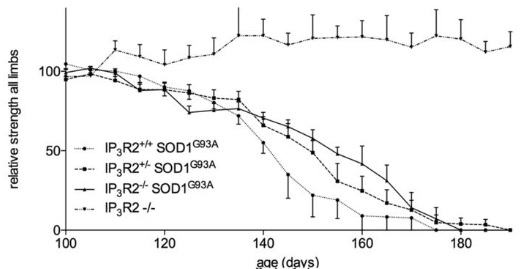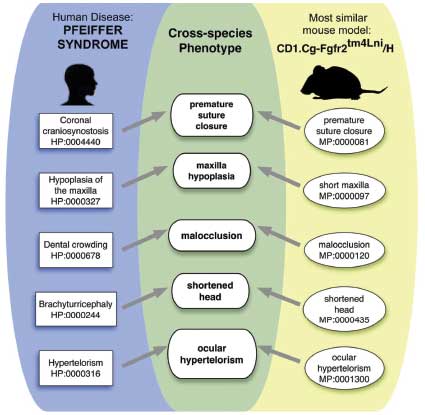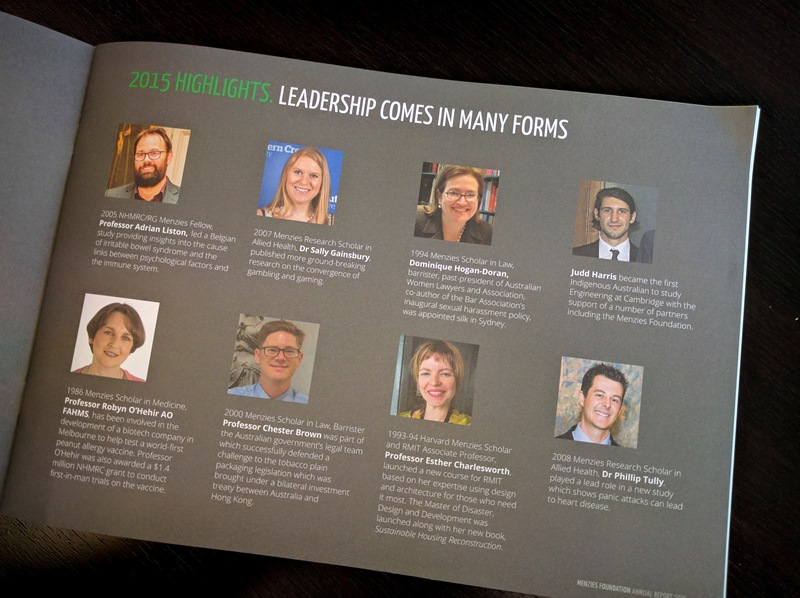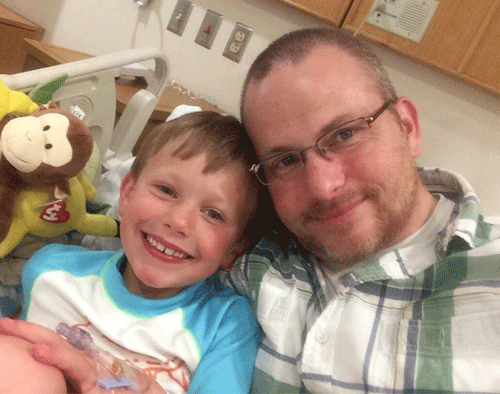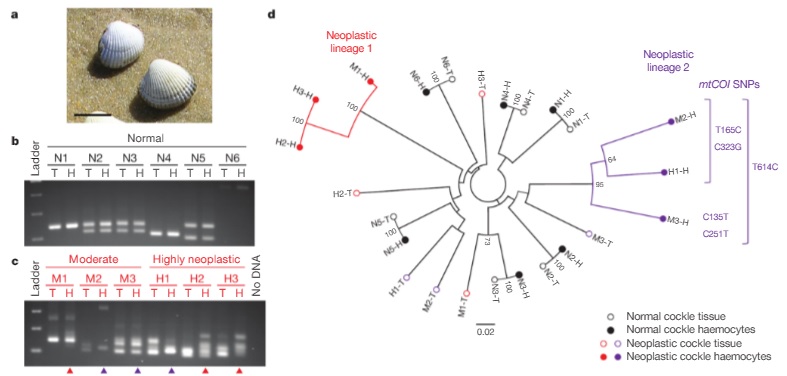De Morgen - 14 Jul. 2016 - Pagina 17
Als ze diëten, leven ze langer. Als ze kaneel eten, leren ze sneller. En als ze genetisch gemanipuleerd zijn, genezen ze van doofheid. Dagelijks komen wetenschappers met berichten over wonderlijke muizenvondsten, met als doel de mens beter te maken. 'Supermuizen helpen zelfs tegen schuldgevoelens.'
`Blinde muizen kunnen weer zien!' Het is, inclusief uitroepteken, een muizenbericht dat agentschappen voor wetenschapsnieuws maandag aanboden. In vakblad Nature Neuroscience meldden onderzoekers dat ze voor het eerst beschadigde netvliesneuronen zodanig kunnen manipuleren dat de beschadiging ongedaan gemaakt wordt en er opnieuw optische zenuwvezels aangemaakt worden. De optische zenuw is de 'datakabel' van het oog. Hierlangs reist informatie die via het netvlies binnenkomt in de hersenen, die de informatie verwerken.
Maar door beschadigde netvliesneuronen kan dat helemaal fout lopen. Tot nu werd niet aangenomen dat die fout op zo'n diepliggend niveau ongedaan gemaakt kon worden. "Maar onze muizen tonen dat zoogdieren een grotere capaciteit hebben voor herstel van het centrale zenuwstelsel dan we dachten", zegt hoofdonderzoeker Andrew Huberman van de Stanford University School of Medicine.
Het opmerkelijke herstel bij de muisjes is het resultaat van intense visuele stimulatie in combinatie met gentherapie. Binnen de drie weken herstelden de muizen 500 keer sneller van de beschadiging dan gewoonlijk. Zoals altijd is de hamvraag of dat zal lukken bij mensen die om dezelfde reden (deels) blind zijn.
En zo gaat het altijd met muizennieuws. Ze lopen minder verouderingsschade en kanker op als ze drie genetische ouders hebben. Ze worden slimmer en leren sneller als je bepaalde genetische manipulaties doorvoert. Gemodificeerde muizen worden nooit dik en kunnen mannelijk zijn zonder Y-chromosoom. De veroudering van de huid kan worden omgekeerd. Ze kunnen herinneringen wissen...
Klinkt allemaal geweldig, maar wat die hocuspocus precies voor de mens kan betekenen, is vaak niet duidelijk en daardoor ontstaat, zeker op nieuwsredacties, een allergie aan nieuwtjes waarin muizen de superheld zijn.
Toch blijven ze maar komen en worden miljarden en miljarden euro's en vooral dollars gestopt in onderzoek waarbij genetisch gemanipuleerde varianten van de knaagdieren de show stelen door soms het onmogelijke te laten zien, zoals kanker en veroudering afblokken.
Dat komt omdat, tussen de massa pogingen en voorlopige resultaatjes, supermuizen af en toe 'prestaties neerzetten' of effecten laten zien die de mens wel degelijk vooruithelpen.
Superneus
Zo zijn er sinds kort muizen die dankzij genetische manipulatie een superneus kregen aangemeten en ingezet kunnen worden om explosieven en drugs te zoeken. In tegenstelling tot bijvoorbeeld honden en ratten die worden getraind om hetzelfde te kunnen, zijn de 'supersniffers' dankzij hun uitzonderlijke neus meteen gebruiksklaar om explosieven en drugs te ontdekken.
Het is de Belgische neurowetenschapper Charlotte D'Hulst die met haar team aan het Amerikaanse Hunter College in New York de genen van de muizen zodanig veranderde dat ze bepaalde geuren sterker kunnen ruiken. Hun supersniffers kunnen nu al twee chemische geuren gelijkend op jasmijn en pepermunt beter detecteren. Eerder modificeerden ze ook al de genen van muizen om de chemische stof DNT, een minder explosieve stof dan TNT, beter te kunnen herkennen.
Bedoeling is nu dat de snuffelhelden ook de explosieve stof TNT snel kunnen opsporen. Wanneer ze TNT ruiken, zouden de muizen door hun versterkte reukvermogen een beroerte of epilepsieaanval krijgen. Door een chip onder de huid in te planten, kunnen de wetenschappers die gedragsveranderingen waarnemen op een computer. Vervolgens kan een mens de bom of landmijn onschadelijk maken.
Ratten worden al langer ingezet om explosieven te vinden, met als voordeel dat ze niet veel geld kosten en ook niet verbonden zijn aan slechts één trainer, zoals bij honden.
Maar met de muizen van D'Hulst kan nog heel wat geld én tijd bespaard worden. De ratten die nu gebruikt worden, moeten immers altijd een trainingsperiode van ongeveer negen maanden doorlopen. De genetisch gemodificeerde muizen met een superneus kunnen die stap overslaan.
Bovendien hebben muizen nog meer voordelen. "Ratten zijn heel effectief", zegt D'Hulst. "Maar muizen, die dezelfde voordelen hebben als mijndetectors, zijn nog goedkoper om bij te houden én om te kweken." Ook is het bij hen relatief eenvoudiger om de cellen in de neus aan te passen. Daarom zoeken D'Hulst en co. eveneens naar een receptor in de neus van muizen die geactiveerd kan worden door drugs. Dan kan de supersniffer ook de drugshond vervangen om onder meer cocaïne op te sporen.
Andere zintuigen van muizen vele keren 'upgraden' of deels of volledig herstellen, zoals in het meest recente onderzoek van Huberman, biedt de wetenschap steeds meer inzicht in hoe dat ook bij de mens zou kunnen. En dat geldt voor een resem andere gezondheidsfactoren.
Alleen fastfood
Kennis over de rol van lichaamsbeweging, dieet en overgewicht, bot-en spierontwikkeling en genetische doping valt bijvoorbeeld te rapen bij genetisch gemanipuleerde muizen die de cartooneske namen 'Mighty Mouse' en 'Marathonmuis' kregen.
Die eerste heeft 70 procent meer spieren dan een natuurlijk model, de tweede kan zonder enige training tot twee keer langer lopen dan niet-gewijzigde soortgenoten. Door een specifiek gen te manipuleren, bootsten de onderzoekers met andere woorden het effect van lichaamstraining na. En als onverwachte surplus verhinderde die verandering in de genen ook dat de marathonmuis verdikt, zélfs als hij inactief is en alleen fastfood eet.
Af en toe duiken nog wel meer van die ultieme supermuizen op, die door soms maar één genverandering niet één maar een hele resem voordelen hebben, zoals topsportprestaties afleggen, langer leven, veel eten maar niet verdikken én een veel actiever seksleven.
Zo'n creatuur schiepen Amerikaanse onderzoekers die de werking van een enzym wilden bestuderen tot hun eigen verbazing. Hoewel het team meteen benadrukte dat een menselijke toepassing absoluut uit den boze is, zou het volgens hen kunnen dat met de vondst nieuwe medicijnen worden gemaakt die ook de mens 'superder' maken. Spaanse wetenschappers wisten dan weer 'supermuizen' te creëren die gegarandeerd kankervrij zijn en bijna de helft langer leven dan soortgenoten.
De onderzoekers wijzigden eerst de genen van de muizen om ze resistent te maken tegen kanker. Daarna verhoogden ze de hoeveelheid van het speciale enzym telomerase, dat de veroudering van cellen kan tegengaan. Daardoor werd hun verouderingsproces met 40 procent vertraagd omdat het enzym hun cellen herstelde zodat ze langer 'jong' bleven. Op vergevorderde leeftijd blijken de beestjes betere spieren, een gezonder huidweefsel en een betere stofwisseling te hebben.
Uiteindelijk wil de wetenschap natuurlijk geen supermensen maken, wél ziektes in de kiem smoren. Omdat kanker, zwaarlijvigheid en neurologische ouderdomsziektes zoals alzheimer tot de meest problematische sluipmoordenaars behoren waar de mens vandaag mee af te rekenen krijgt, zijn de vips onder de supermuizen de exemplaren die tonen hoe die aandoeningen schaakmat gezet kunnen worden.
Wat kanker betreft, zijn muizen, door hun gelijkenis met mensen, al meer dan een eeuw belangrijk in het onderzoek en dat is alleen maar toegenomen sinds genetische manipulatie mogelijk werd. "Het grote voordeel is dat je bij de diertjes de ontwikkeling van kanker vanaf de allereerste cel kunt volgen en er interactie is met andere cellen", zegt moleculair bioloog Jan Cools (VIB/ KU Leuven). "Dat is een echte surplus tegenover in-vitrocelsystemen."
De belangrijkste supermuizen in het kankeronderzoek zijn ongetwijfeld de modellen waarin is aangetoond hoe muizen kanker helemaal verslaan met hun immuunsysteem.
Cools: "Ondertussen is immuuntherapie ook bij mensen een groot succes, maar de methode moet nog verder ontwikkeld worden en dan blijven de genetisch gemanipuleerde muizen een erg goed studiemodel. Zo hebben we bijvoorbeeld ontdekt dat niet zomaar elke cel in een tumor kan veranderen. En we kunnen veel preciezer specifieke kankers in detail bestuderen, zowel als het gaat over hoe ze ontstaan en evolueren als over doelgerichte behandeling."
Ook in het onderzoek naar alzheimer zijn muizen waaraan gesleuteld werd doorslaggevend, vandaar de vele berichten over de knaagdiertjes die veel slimmer worden, een zwaar opgekrikt geheugen krijgen, herinneringen kunnen wissen of deels genezen van degeneratieve neurologische aandoeningen.
"Door een alzheimergen in te planten bij muizen is voor het eerst de genetische component van de ziekte bewezen, wat een enorme boost voor het onderzoek heeft betekend", zegt moleculair bioloog Bart De Strooper (VIB/KU Leuven). "Tegelijkertijd is zo, bijna per toeval, een belangrijk principe voor genezing ontdekt. Omdat muizen geen mensen zijn, krijgen ze de ziekte maar deels. Logischerwijs kun je dat effect versterken door de plakkers die alzheimer in de hersenen veroorzaken onder de huid te injecteren. Maar bij de diertjes die die injectie dan krijgen, neemt het aantal plakkers net sterk af, wat wijst op genezing."
Een tweede ontdekking, waar De Strooper zelf bij betrokken was, is dat een ander alzheimergen weghalen ervoor zorgt dat de plakkers niet meer worden aangemaakt.
Al even spectaculair zijn de doorbraken bij superintelligente muizen en muizen met een uitzonderlijk geheugen. Eén team heeft een valse herinnering bij muizen aangebracht, een ander slaagde erin 'sociale herinneringen', in dit geval een ontmoeting met een andere muis, te wissen. Ook daarbij komt genetische manipulatie kijken. Een ander voorbeeld zijn muizen waarbij één mutatie geassocieerd met autisme wordt weggehaald, waardoor ze geen nestjes meer maken. Volgens sommige onderzoekers ligt de weg dan ook open naar nieuwe behandelingen voor medische en psychiatrische aandoeningen zoals depressie, posttraumatische stress en ook alzheimer.
Achterhaalde ideeën
De Strooper bevestigt het belang daarvan en wijst erop dat de muizen de ideale onderzoeksobjecten zijn omdat je erop kunt testen wat je niet bij mensen, maar om ethische redenen ook niet bij hogere primaten kunt uitzoeken.
Zo mogelijk nog meer tot de verbeelding spreekt de muis die nooit dik wordt. Zo lopen er al verschillende exemplaren rond en ze hebben de kennis over obesitas fundamenteel bijgespijkerd. Professor Adrian Liston (VIB / KU Leuven) heeft zo'n eeuwig slanke muis.
"Wat en hoeveel ze ook eet, nooit neemt haar gewicht toe", zegt Liston. De muis heeft een mutatie van het leptinereceptorgen, waarbij zwaarlijvigheid die via de lever ontstaat, is weggenomen. Bij andere muizen is dat gebeurd in vetweefsel of in de hersenen. "Waar het op neerkomt, is dat we veel beter begrijpen hoe dat hormoon dat vetopslag regelt precies werkt", zegt Liston.
"Zo weten we bijvoorbeeld dat obesitas kan ontstaan door hoe het hormoon op het brein en niet rechtstreeks op het vet inwerkt. Dankzij de gemodificeerde muizen weten we vandaag dat vetopslag via verschillende wegen kan ontstaan, zowel door mutaties in de hersenen, organen zoals de lever of in het vet zelf."
En dat is volgens de expert een manier om achterhaalde ideeën bij leken en in de medische wereld af te voeren en mensen met overgewicht te verlossen van een schuldgevoel. Liston: "Overgewicht gaat niet enkel over te veel eten, te weinig bewegen en een gebrek aan discipline. Dat foute idee staat nog altijd overeind, ook in de medische wereld, en leidt zelfs tot depressie bij mensen die te veel wegen. Dankzij muizen weten we dat het verband met wat je eet maar gedeeltelijk is omdat er duidelijk een hele resem verschillende genetische factoren spelen die mee bepalen wat er met het voedsel dat je eet gebeurt. En dat het dus gedaan moet zijn met de patiënten de schuld te geven."
Niet naïef
Maar wat we zeker niet mogen doen, zo benadrukken De Strooper en Liston, is naïef aannemen dat wat bij muizen kan, zomaar toepasbaar is op mensen. De Strooper: "De gelijkenissen met mensen zijn groot, maar er zijn natuurlijk aanzienlijke verschillen. De genetisch gemanipuleerde muizen blijken erg belangrijk om ziektes en de werking van bijvoorbeeld de hersenen te begrijpen en nieuwe principes te ontdekken, maar daarmee heb je nog geen therapie voor mensen.
"En wanneer het bijvoorbeeld gaat over de doorbraken in het alzheimeronderzoek, zijn er al miljarden gepompt in medicijnen ontwikkelen op basis van de vondsten bij de muizen." Ook bij obesitasonderzoek is dat het geval. Net daarom ziet De Strooper nog een andere reden om het over 'supermuizen' te hebben: "Ze trekken superveel centen aan voor onderzoek dat concrete toepassingen moet opleveren en dat heeft nog niet superveel resultaat opgeleverd."
 Tuesday, August 2, 2016 at 1:31PM
Tuesday, August 2, 2016 at 1:31PM  Liston lab
Liston lab 

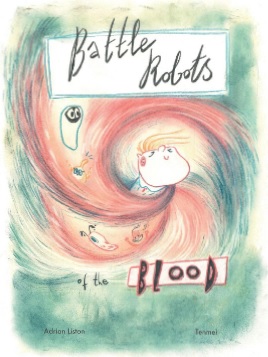


 Online here
Online here